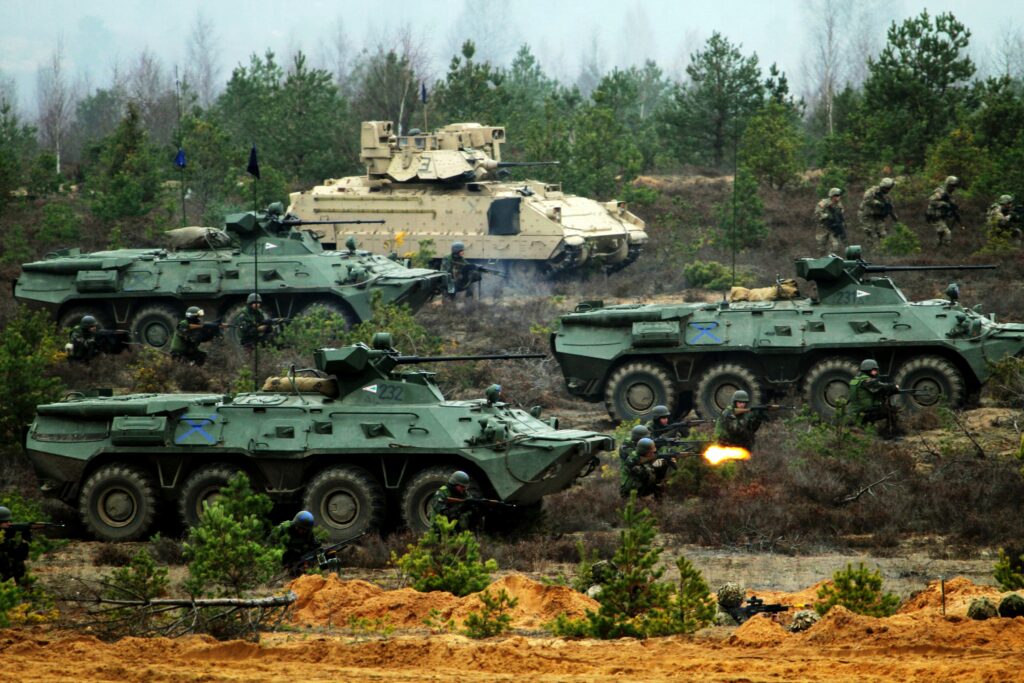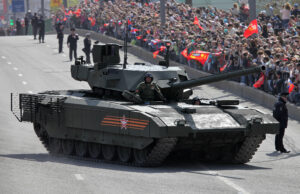High-End War Capabilities Sneak Into Army’s 2018 Budget
Posted on

US and Hungarian forces train together in Lithuania. The 2018 budget request makes major increases to such exercises with European allies.
If Congress enacts the Trump administration’s 2018 budget request, many in the Army will be ecstatic. Weapons contractors, maybe not so much.
The $137.2 billion request ($166.1 billion including overseas contingency operations funds) is up by 5 percent from a year ago. It would be the most money the Army has gotten since 2012.

Maj. Gen. Thomas Horlander.
The budget is in tune with the priorities set by Defense Secretary Jim Mattis: Fix near-term readiness, but also make progress toward a more “modern, capable and lethal force,” said Army Budget Director Maj. Gen. Thomas A. Horlander.
The 2018 funding request is about “closing vulnerability gaps,” he said today at a Pentagon news conference. “This budget arrests Army readiness decline and sets conditions for future improvements.”
As expected, most of the money is going to personnel, operations and maintenance. The personnel account grows by $2.5 billion in 2018, and O&M gets a $3.2 billion boost. Weapons modernization continues to be squeezed, with a modest increase of $600 million: procurement is slipping by $400 million but research and development is up by $1 billion from 2017.

Army personnel and readiness accounts increased significantly over 2017, while procurement declines slightly.
Horlander ran through long list of modernization priorities, which mirror those cited in recent months by the Chief of Staff, Gen, Mark Milley, and senior Army leaders: Air and missile defense, long-range fires, munitions, mobility, active protection, protection of GPS navigation, electronic warfare, cyber warfare, communications and vertical lift. These capabilities are needed for the “A2/AD fight,” said Horlander, using the Pentagon’s codeword for Chinese and Russian weapons and tactics designed to deny U.S. forces their traditional advantages.
“Air & missile defense and long-range fires are the most pressing capability needs,” Horlander said.
The budget, for instance, funds
- 131 Patriot missile modification kits,
- upgrades to the Avenger and Stinger air defense systems,
- 6,000 guided multiple-launch rockets,
- a 10-year service life extension for 121 expired ATACM surface-to-surface tactical missiles,
- 88,000 Hydra-70 rockets,
- 480 war reserve Excalibur precision-guided artillery rounds,
- and 998 Hellfire missiles.
The Army also seeks funds to overhaul and modernize the Holston ammunition plant in Tennessee. The RDT&E request funds next-generations systems such as high-energy lasers. These are the type of weapons that will “enable the Army to retain advantage against advanced adversaries and address a broader range of threats, as well as deter or defeat near-peer adversaries,” said Horlander.
To fund a surge of missiles and munitions production, the Army has had to make tradeoffs. It cut Abrams modernization from 60 tanks last year to 20 in 2018. And aviation spending — helicopters and drones — drops from $5.2 billion last year to $4.5 billion.

Aircraft procurement dropped while missiles, tracked vehicles, and other weapons rose.
The major target of all these new munitions is the Russians, and the Army plans to continue spending big bucks on the European Reassurance Initiative, started by the Obama administration to shore up U.S. allies against an increasingly aggressive Russian posture. The 2018 OCO budget seeks $3.2 billion for ERI, a $400 million bump. The money would fund rotations of Army forces, including a full armored brigade, a combat aviation brigade, a divisional mission command element and logistics support units.

Russia’s new T-14 Armata tank on parade in Moscow.
The ERI and overall military support of European allies has become a rising concern on Capitol Hill. House Armed Services Committee Chairman Rep. Mac Thornberry has directed the Pentagon to study the cost of stationing Army brigades in Eastern Europe permanently, as opposed to rotating units there. “I’m not convinced it’s cheaper to rotate,” Thornberry said yesterday at the Brookings Institution. Rotations also create huge burdens on families, he said. Director of Force Structure, Resources and Assessment on the Joint Staff Lt. Gen. Anthony R. Ierardi said the Pentagon has not begun to study that yet. “These are important questions we need to answer regarding ERI and our support of European allies,” he told me.
A growing concern going forward is how the Army will manage the elephant in its budget: its personnel account that continues to drain resources from everywhere else. With help from Congress last year, the Army grew the active-duty ranks from 450,000 to 476,000. The addition of 26,000 troops inflates personnel costs by $2.8 billion per year. The kind of buildup that Trump has floated would bring 50,000 more soldiers into the force.
How would the Army cope financially? That’s a discussion now underway, said Horlander. After a strategic review is completed this summer, “we’ll have more information on what the true size of the force should be.”
Subscribe to our newsletter
Promotions, new products and sales. Directly to your inbox.
